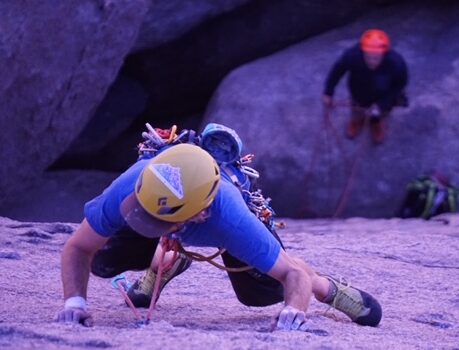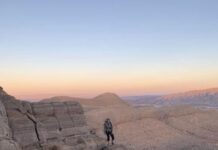I recently interviewed a young man who just set a Guinness World Record for completing the highest amount of elevation gain ever recorded in a month (about 400,000 feet of gain). The record required that he run laps of the same mountain over and over for 30 days. When I asked him what drove him to complete such an endeavor, he explained that it was the fear of failure. He’d previously dropped out of a military program that left him feeling humiliated, demeaned, and ashamed, and he wanted to do everything in his power to stop those feelings from forming again.
I left the interview feeling puzzled. Humans derive meaning in so many different ways, dedicating themselves to music, family, and careers. How is it that the mountains are able to fill the void for those who struggle with fear even though the mountains are infamous for creating fear in the first place?
Perhaps it’s the confrontation of fear that allows us to reckon with it.
As Mark Twain wrote: “Courage is resistance to fear, mastery of fear, not absence of fear.”
Using Emotion as a Motivator
Emotion has been a great catalyst throughout my life, too. I managed to use fury to motivate myself to ascend higher peaks, to navigate despair on long trails, and grief was always a great awakener. I climbed to get to the top of peaks, and mountains, to test my physical limitations, and to dive into the chaos of my own mind. But fear was always the hidden snake, lurking in the deep.
I was afraid to stay the same. I didn’t want to pass my life in a stupor, working on someone else’s dream in order to pay the bills for a bunch of things I’d never own. Did success mean forfeiting autonomy to follow a predetermined path that led to nowhere? I was afraid that none of my efforts would amount to anything. So, I harnessed my fears to facilitate change.
On Allowing Fear to Impact Your Body
While I was learning how to lead climb, I noticed that my body collapsed in on itself when I was afraid. Lead climbing increases the level of danger that climbers experience while they’re scaling a rock. The follower may fall a foot or two, but the leader runs the risk of falling much longer distances, potentially even hitting the ground.
This Summer, on one particular climb, I noticed myself questioning my ability to place gear effectively, which caused fear to swell in my chest. I didn’t trust my ability to determine whether a piece of gear was safe to use or not. So, I assumed that all of the cams would pop out of the wall, leaving nothing but air between me and the Earth. I was terrified of falling. And this sensation changed the way that I moved.

A confident climber will stretch their limbs out in pursuit of the best position. But a fearful climber, like I was, tends to scrunch their body, over gripping what holds they’ve already found. This contributes to unnecessary energy expenditure, and potentially crappier holds. So, you’re more likely to exhaust your resources before you’ve made it to the top – or to overlook something that could completely transform your climb. Because of this, fearful climbers are more likely to fall than those who climb with self-assurance. Unbridled fear can contribute to failure.
Using Fear as a Motivator
I don’t know whether or not fear should be used as a motivator. But I know that it changes the way that I think, behave, and move. Perhaps it’s the sheer power of this emotion that makes it a natural companion for change. But, when unharnessed, fear has the ability to create limitations in a way that blind confidence won’t. And remaining conscious about the effects of fear on my mind and body is vital to my own success. It’s only in recognizing that fear causes you to climb inefficiently that you can begin to make different choices.
For More Inspiration:
- Using Imperfections to Ascend to the Top
- Encountering Post Trail Depression After the Appalachian Trail















